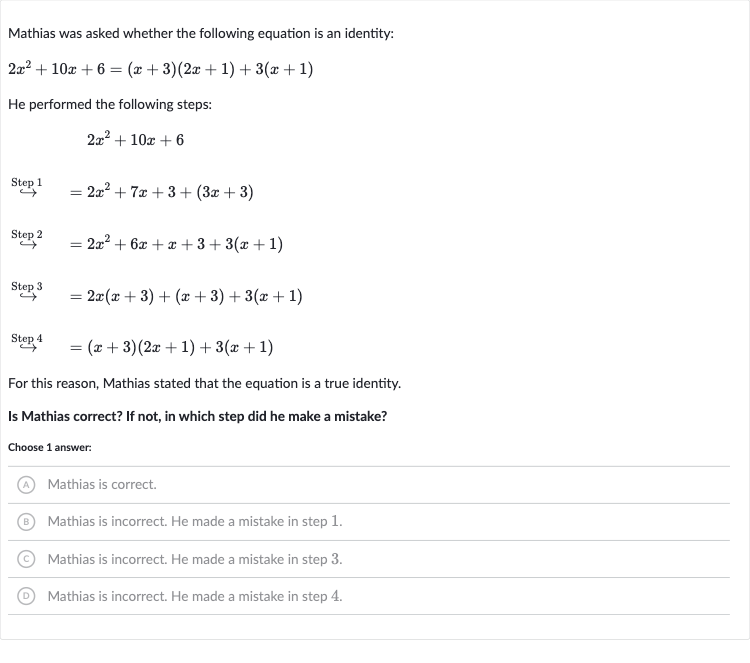AI tutor
Welcome to Bytelearn!
Let’s check out your problem:

Mathias was asked whether the following equation is an identity:He performed the following steps:For this reason, Mathias stated that the equation is a true identity.Is Mathias correct? If not, in which step did he make a mistake?Choose answer:(A) Mathias is correct.(B) Mathias is incorrect. He made a mistake in step .(C) Mathias is incorrect. He made a mistake in step .(D) Mathias is incorrect. He made a mistake in step .
Full solution
Q. Mathias was asked whether the following equation is an identity:He performed the following steps:For this reason, Mathias stated that the equation is a true identity.Is Mathias correct? If not, in which step did he make a mistake?Choose answer:(A) Mathias is correct.(B) Mathias is incorrect. He made a mistake in step .(C) Mathias is incorrect. He made a mistake in step .(D) Mathias is incorrect. He made a mistake in step .
- Check Mathias's step: Check Mathias's step .This simplifies to , which is not the original left-hand side.
More problems from One-step inequalities: word problems
QuestionGet tutor help
QuestionGet tutor help
QuestionGet tutor help
QuestionGet tutor help
QuestionGet tutor help
QuestionGet tutor help
QuestionGet tutor help
QuestionGet tutor help
QuestionGet tutor help
QuestionGet tutor help
